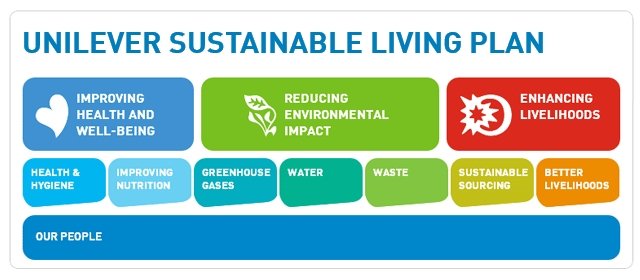




Engaging your People with ESG Goals: The Vital Role of Change Management
Whether they realise it or not, all large organisations are confronted with a pressing need and societal pressure to align their operations and products with well-thought-out, and not token, Environmental, Social, and Governance (ESG) goals. These objectives, often centred around sustainability and responsible business practices, are pivotal chiefly for ensuring a brighter future for our planet, but also for the long-term success and reputation of businesses.
Investors, shareholders, current and potential employees as well as customers want to know that your company is doing the right thing to preserve our environment, planet, and people. However, the journey towards sustainability is laden with herculean challenges bigger and more unnerving than any Nemean Lion or Cretan Bull.
This is because strategic implementation, and not just the talk, is needed to help companies reach their goals, and this is where the often overlooked practice of change management plays a vital role. It is one thing to re-brand or change your colours on your company website, but it is a completely different ball game to be brave and take those first steps towards a true sustainability transformation that brings everyone on the journey with you.
Resisting the Current: The Role of Resistance Management
Any change, even when driven by a noble cause like ESG goals, often, if not always, faces resistance. This resistance can stem from various sources, such as fear of the unknown, perceived disruption or concerns over personal comfort. Change is difficult because it effectively means we are rewiring our brains and altering our actions and thoughts, which doesn’t happen overnight. We love routines and habits and hate uncertainty. Uncertainty creates the fight or flight response which increases fear and anxiety that, if left unmanaged, can seriously hinder change efforts and lead to impaired performance and decreased morale.
Often, leaders fail to recognise how painful this process is for their employees, which can be the undoing of their transformation ambitions. Even when change is necessary to mitigate an existential threat, such as the climate crisis, the brain’s resistance is a natural defence mechanism. The success of a transformation lies in how leaders address and manage these resistance factors, remembering that people should be at the heart of efforts, and resistance is natural, but not impossible to overcome.
For example, when Nike embarked on their journey towards sustainability with their ‘move to zero’ initiative, it encountered resistance from sceptics who believed that a large, profit-driven corporation couldn’t authentically contribute to environmental and social causes, and that its environmental footprint was too damaging to tackle. Employees worried about their job security and shareholders were loud and sceptical.
Nike countered this resistance by transparently communicating their intentions, backing up their claims with measurable actions and involving their stakeholders in the decision-making process. Although slow to respond initially, and although critics will outline their approach has been far from perfect (labour practices, fast-fashion operating model, etc.), they have made innovative steps towards their ESG goals.
How? They threw enormous effort into managing the change and opened channels of communication across the organisation, encouraging new and experimental ideas such as using recycling programmes, overhauling materials and using landfill waste as a key resource for their products.
Underpinned by a move towards an agile framework, collective goals and an open dialogue, Nike were able to assuage doubts and foster a sense of collective responsibility, effectively silencing the naysayers and galvanizing change from within. They listened to the anxiety and are actively trying to bring people along the journey with them, rather than leaving them behind.
By fostering understanding and empathy and having clear and consistent communication, Nike is an example of how change management helps to reshape perceptions and create a conducive environment, overcoming initial resistance to embed sustainable practices.

The Power of Purpose: Uniting Companies for Change
A strong mission statement, or north star, acts as the compass, guiding an organisation’s journey towards transformation and its ESG goals. It should be simple, easy to understand, void of corporate jargon and authentic. Leadership should stand firmly behind it, and employees should own it.
Without a north star, it’s like saying, “run really fast and hard in that direction”, giving your people no rationale as to why they should do so but still putting hot coals to their feet.
Mission statements and authentic value propositions are far more powerful than we give them credit for, as they help to focus and align change efforts on the ground, ensuring programmes, projects and goals are working towards something collective and that employees have something they can be part of and feel their efforts have an impact. It’s also a highly beneficial tactic in calming those change anxieties as well.
Consider the case of Patagonia, the outdoor clothing and gear company that took a bold stance on sustainability. Their mission: “Build the best product, cause no unnecessary harm, use business to inspire and implement solutions to the environmental crisis”. This not only became the core of their identity, but also a rallying point for their employees and customers alike.
Patagonia’s commitment to this mission statement fuelled its sustainability initiatives, driving change from within and creating a sense of purpose that transcended profit margins. Its customer base knew where this company stood and didn’t feel like they were always dodging marketing smoke and mirrors around sustainability claims.
Of course, an organisation founded on ESG goals is likely to attract already bought-in employees and shareholders, but it is a strong example of what can happen when a group of individuals come together behind a single mission on sustainability.
From another angle, let’s look at a large, complex company that was traditionally not sustainable but has taken steps to pivot and change itself from within. You guessed it, the company is Unilever, the global consumer goods giant that embarked on a transformative journey by adopting the Sustainable Living Plan.
Their vision statement is: “To be the global leader in sustainable business. We will demonstrate how our purpose-led, future-fit business model drives superior performance, consistently delivering financial results”. This ambitious initiative aimed to decouple the company’s growth from its environmental footprint and increase its positive social impact by marrying sustainability goals and financial performance.
By aligning their organisational purpose with a larger societal goal, Unilever was able to engage its workforce in a collective effort towards sustainability. Change management strategies were harnessed to foster ownership and responsibility among employees on a global scale, turning sustainability into a shared endeavour through strong and consistent communication, innovation and a reward scheme focused on values and results linked to their vision. This approach made the change less ambiguous and threatening, and it ensured employees felt ownership and buy-in, helping them to change their behaviours and routines.
Although highly critiqued, Unilever’s approach is still bold and heading in the right direction, with divestments within the company to ensure they can continue to meet their ESG goals. New business processes and ways of working underpin their efforts, but to get there without a goal or north star would have been incredibly challenging for employees. They needed something to get behind, collectively, to change themselves and the work on the ground across the organisation.

Towards a Sustainable Future: The Convergence of Mission, Change Management and Empathy
In conclusion, change management should be a cornerstone in your pursuit of ESG goals. As demonstrated by Patagonia, Unilever and Nike, a strong mission statement can serve as the catalyst for transformation, uniting stakeholders and fostering a sense of purpose. Resistance management, exemplified by Nike’s transparent approach, allows companies to overcome obstacles and gain buy-in from sceptics while ensuring that change anxieties are listened to and acted upon.
Finally, understanding the brain’s psychological responses to change, even when driven by the need to combat an existential threat, underscores the importance of effective change management strategies. By addressing fears and providing support, companies can navigate through resistance and lead their workforce towards sustainable practices, making substantial steps towards their ESG goals.
As William Shakespeare wisely noted, “Our doubts are traitors, and make us lose the good we oft might win, by fearing to attempt.” Change, particularly the mammoth transformative journey towards sustainability, necessitates bold attempts. However, it is through well-crafted mission statements, inclusive change management, and active employee engagement that these attempts can evolve into enduring successes, propelling companies towards a brighter and more sustainable future.
Whether you’re at the start of your transformation or already on your journey, get in touch for a conversation about how Afiniti’s change management can support your people and your ESG goals.
To get the latest change tips, advice and guidance directly to your inbox, sign up to our monthly Business Change Digest.
